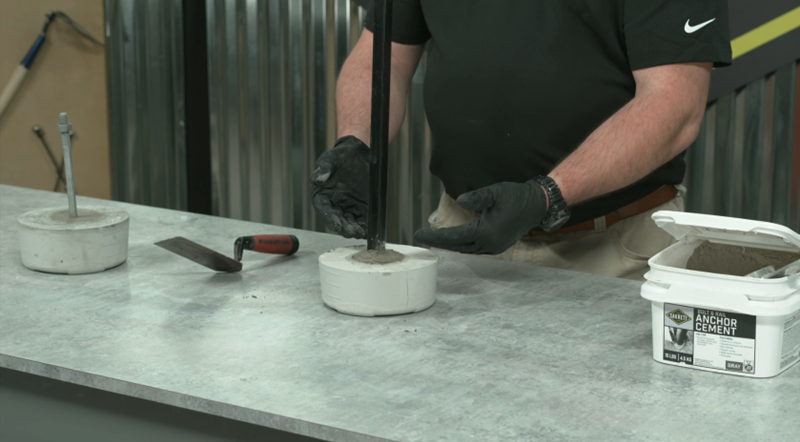Tools Needed
- PPE – N95, nitrile gloves, eye protection
- Brush or broom
- Mixing bucket
- Bolt
- Rail
- Margin Trowel
Project Level: easy
Project Length: 30 minutes
Sakrete Pro Tips | Anchoring Bolts and Rails
Anchoring cement is a pro-grade solution to securing bolts, railings, posts and more to existing concrete. Anchoring cement can be used for anchoring bolts to attach a sill plate, wet-anchoring a railing for a fence/handrail, and anchoring heavy-duty machinery into place. The reason why real pros use anchoring cement instead of regular cement is thanks to its non-shrink properties, high strength, flexibility, and quick-setting.

Project Tip: Never use standard concrete for anchoring applications.


Project Tip: Not shaking the container is the #1 reason for material failure.

Project Tip: Hole diameter should be 3 - 4x the diameter of the fixture.


Project Tip: Finish in dome shape to send rainwater away from the bolt or rail.

Enter An Email To Send These Results.